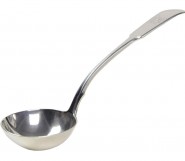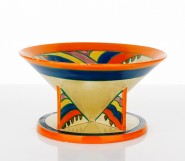Lot #9 - Wimmitji (Tjapangati)
-
Auction House:Mossgreen
-
Sale Name:The Alan Boxer Collection of Australian Indigenous Art
-
Sale Date:17 Mar 2015 ~ 6.30pm
-
Lot #:9
-
Lot Description:Wimmitji (Tjapangati)
(Circa 1925–2000)
Artist's Country (Yirrawilli) (1989)
synthetic polymer paint on canvas
120 x 85 cm
bears Warlayirti Artists cat. no. 636/89 verso -
Provenance:Warlayirti Artists, Western Australia; Chapman Gallery, Canberra; The Alan Boxer Collection, Canberra
-
Exhibited:Crossing Cultures: Art From the Boxer Collection, Drill Hall, Canberra, May - June 2000, cat. no. 49
-
Notes:This painting is sold with a Warlayirti Artists Aboriginal Corporation certificate. Wimmitji Tjapangarti is regarded as the grand old man of the painting movement at the community of Wirrimanu (Balgo). His life story, his status as a major ceremonial leader, his deep ancestral knowledge, his renown as a mapan (healer), and as builder of bridges between two cultures are reflected in his extraordinary body of work which was not overly prolific in terms of numbers of canvases, but that looms large in the ancestral and aesthetic dimensions of his art. Wimmitji was born about 1924 at Kutakuta near Percival Lakes, southwest of Balgo in the Great Sandy Desert. He lived in the traditional way until the 1940s when he was attracted to the Catholic mission at Balgo Hills where the rest of his family had previously taken up residence. Wimmitji was soon to establish himself as an influential member of the community that housed people belonging to several language groups but where Kukatja is the lingua franca. In the years after World War II Wimmitji assisted the eminent anthropologists Ronald and Catherine Berndt in their researches into desert culture, and he guided Father Peile, a missionary, in his academic work on traditional healing. Wimmitji also made a significant contribution to the Kukatja-English dictionary. In 1981-82 Wimmitji was among a small group of elders who began to paint in acrylics, as part of an adult education course. At the time the Church encouraged the Aboriginal residents of Wirrimanu to paint. In 1986, Wimmitji was one of the major artists in the landmark exhibition Aboriginal Art from the Great Sandy Desert at the Art Gallery of Western Australia which put the art of Balgo on the map. He commenced painting regularly again after Michael Rae was appointed coordinator of Warlayirti Artists in 1988. By then Wimmitji had married Eubena Nampitjin, and theirs was to develop into one of the great collaborations in Australian art. They would often work on each other's paintings and Wimmitji's style had a marked influence on that of his wife. Wimmitji often preferred to paint using his fingers instead of a brush to replicate as near as possible the act of ceremonial painting on the body and the making of sand paintings. Thus he emphasized the connection between the various art forms, and in turn incorporated the new medium into the desert art repertoire. While a wide range of colours was made available to Balgo artists in the late 1980s, by and large Wimmitji preferred those hues that best replicated the traditional palette. Artist's country, 1989, is quintessentially in Wimmitji's style: the application of paint in irregular fields of dotting, figures outlined in white, and dynamic drawing all combine to produce a shimmering, diaphanous surface that is at once visually tactile yet elusive. The painting succinctly captures the supernatural forces unleashed by the ancestral Snakes that imbue this desert landscape with the life-giving properties of freshwater. Wally Caruana
-
Estimate:A$18,000 - 25,000
-
Realised Price:
-
Category:Art
This Sale has been held and this item is no longer available. Details are provided for information purposes only.










